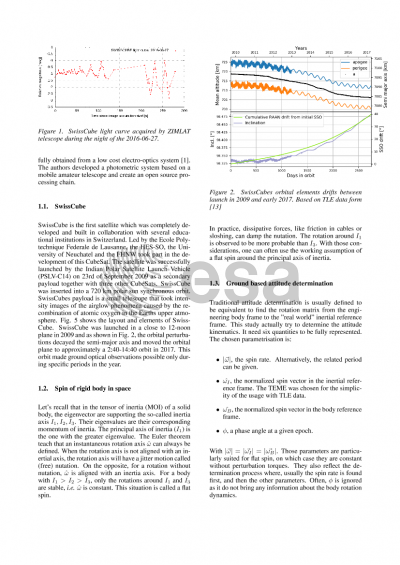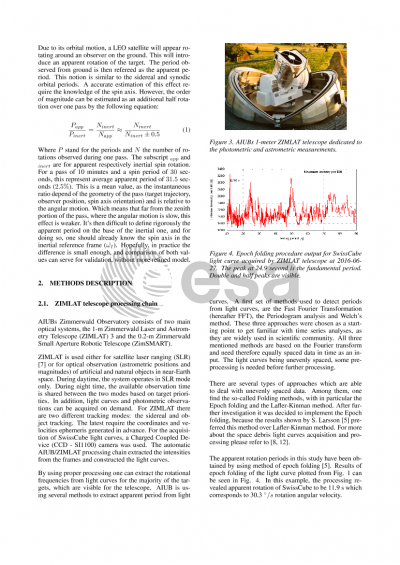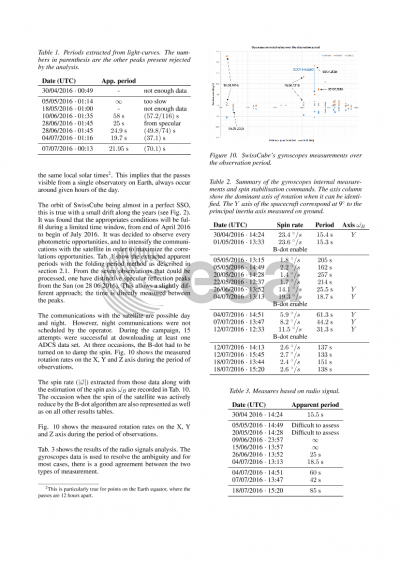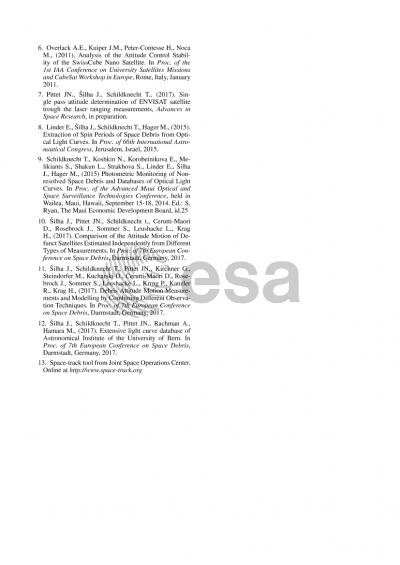Document details

Abstract
Knowledge about the attitude state of space debris is necessary for the design of active debris removal missions. Ground-based, passive optical observations may be used to improve the accuracy of orbital predictions and allow studying the attitude motion of spinning passive objects in orbit. The application of developed methods can be extended to contingency scenarios (failure investigation) or even to active mission, for example for the validation of sensors.
Unlike other methods that use retro reflectors on the target or complex radar facilities, the method used in this work requires only a telescope equipped for relative photometry. Acquisition routine should include tracking algorithms for the targeted orbits.
Other teams using similar methods studied primarily the large objects, which spin fast or which move slowly in the sky. Challenges related to acquisition and processing increase when small objects in low Earth orbit are studied. There are three main reasons for that: the phase angle varies quickly with time, the signal can be very faint and the spin axis is typically less stable due to external perturbations. In addition, when the target spins slowly, the analysis is more difficult.
Between April and July 2016, SwissCube, a 10cm CubeSat type spacecraft designed, built and operated by EPFL (École polytechnique fédérale de Lausanne) and other Swiss partner institutions, has been intensively observed by the Astronomical Institute of the University of Bern (AIUB). EPFL was retrieving internal attitude data and performing radio signal polarization analysis for the time intervals of the AIUB optical observations. These three independent sources of attitude estimation were combined for validation purposes. The spin rate has been actively changed during this period in order to test the limits of this method for different spin periods.
This paper presents the observation (photometry and radio-polarization) and the data processing techniques in the first section. It then describes the SwissCube sensors and their configuration in the Cube. Finally, we present the observations and cross-correlation results. The results are encouraging especially for SwissCube spin rates greater than 15 deg/sec.
Preview









